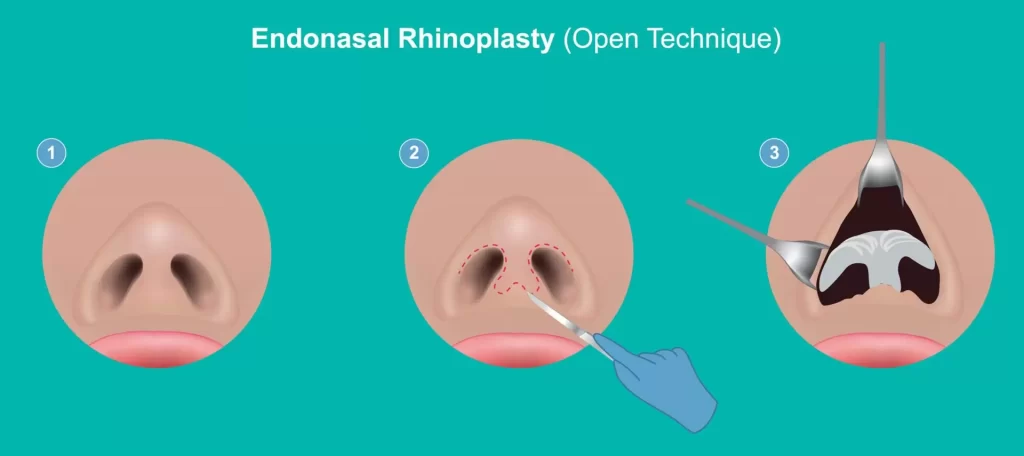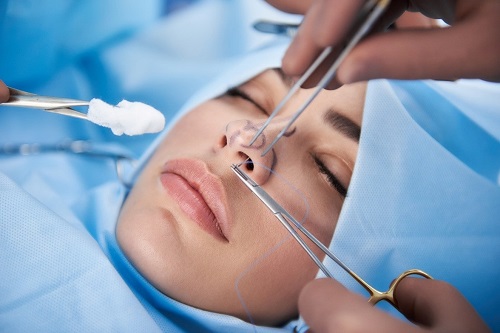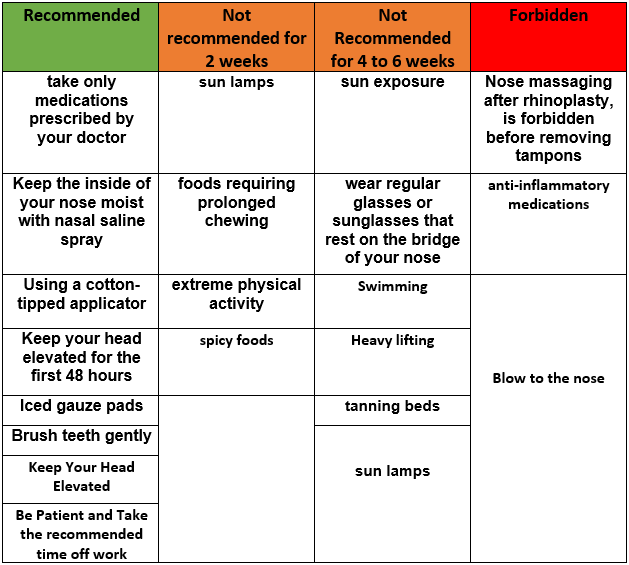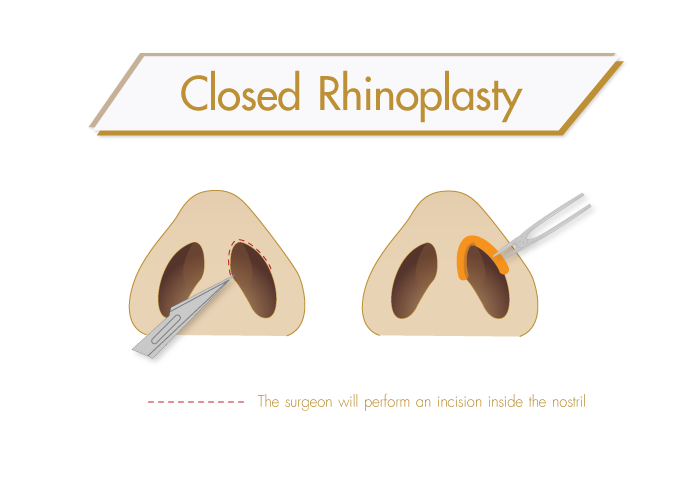Rhinoplasty Surgery In Iran – Cost – Risk – Recovery
- April 12, 2022
- 0 Likes
- 2593 Views
- 7 Comments
Rhinoplasty Surgery In Iran: All You Need To Know
Iran is known as the ‘nose job capital of the world’, with more per capita procedures than any other country (seven times more than the United States). With well-educated specialists performing different kinds of nose surgeries — cosmetic and medical — Iran enjoys one of the richest manpower resources for nose surgery in the world
What Is Rhinoplasty?
Rhinoplasty is surgery that changes the shape of the nose. The upper portion of the of the nose is bony, and the lower portion is cartilaginous. Rhinoplasty can change bone, cartilage, skin or all three. Talk with your surgeon about whether rhinoplasty is appropriate for you and what Is the yield. While planning rhinoplasty, your surgeon considers your whole facial features, the skin on your nose and Extent of the postoperative change. If you’re a candidate for surgery, your surgeon will Design a customized plan for you.
It is a surgical procedure which is usually performed by either an otolaryngologist-head and neck surgeon, maxillofacial surgeon, or plastic surgeon to improve the function (reconstructive surgery) or the appearance (cosmetic surgery) of the nose. rhinoplasty is also commonly called “nose reshaping” or “nose job”. rhinoplasty can be performed to meet aesthetic goals or for Post traumatic restoration, birth defects or breathing problems.
Types Of Rhinoplasty Surgery In Iran
1 - Closed Rhinoplasty
A closed rhinoplasty is the most common type of rhinoplasty surgery and the one that Dr.Shahriar Shahmoradi chooses most often. All incisions are hidden inside the nose with no external scars. Lifting the soft tissue slightly upward, the bone and cartilage is accessible to perform the necessary changes.
2 - Open Rhinoplasty
An open rhinoplasty has historically been the rhinoplasty for patients who need Elaborated correction. Your surgeon makes incision over the skin between your nostrils underneath your nose. This area is called the columella. Next, the skin is lifted to expose the inside of the nasal cavity, giving your rhinoplasty surgeon access to perform the necessary reshaping.
Where extensive grafting or when revision surgery is needed, you may require an open rhinoplasty. Some surgeons will choose open rhinoplasty as primary approach based on their expertise or trainings.

3 - Revision Rhinoplasty
Revision rhinoplasty is corrective surgery after a primary rhinoplasty. Typically, patients opt for a revision rhinoplasty either are unhappy with the results of the primary rhinoplasty or they seek further changes not fulfilled in the primary rhinoplasty. Also Breathing difficulties uncovered or created by the primary surgery are fairly common a common cause of second surgery. Most surgeons have a revision rate of around 10-15%. The main reason for revision surgery is breathing difficulty or a bump or irregularity of the bridge of the nose.

Rhinoplasty Surgery Procedures:
The approach for rhinoplasty is addressed by main complaint of the patient about his/her nose. The main issues considered to be determining include:
- the bridge of the nose—width, height, bump
- the tip of the nose and how the cartilage is shaping the tip
- the base of the nose, how wide it is and how much projection the tip has
The Other crucial factor is predicting how will the beauty seeker look after the rhinoplasty. There are specialized computer programs that can aid forecasting but that is just an estimate. The best predictor is Choosing a plastic surgeon who has done a large number of successful rhinoplasties. The surgeon Has far more precise vision of the result out experience.
Typical steps of the rhinoplasty include:
- rasping down the bony hump,
- shaving the cartilaginous hump,
- sculpting the tip cartilage,
- making cuts in the bones and pushing them inward
Cuts can be made from inside or outside of the nose. Some noses require resection of fat from the tip, and some need excision of skin of the nostrils. Various steps may be performed to improve the breathing, such as operating on the septum between the nostrils or the turbinate’s (the air baffles of the nose).
With hundreds of possible steps, rhinoplasty is the most individualized operation in plastic surgery. Neither of the noses are alike, and nor require the same procedure. The rhinoplasty inquires creativity, since the actual structures of the nose appears to be unexcitingly different. The plastic surgeon has no imaging to give him /her any idea about the cartilage prior to surgery, so must utilize his /her own imagination. occasions such as cracked or buckled cartilage and scar tissue make this operation challenging to even the most experienced surgeon.
There is a various scenario when creating your rhinoplasty experience. Rhinoplasty can be performed in a number of different ways. The surgery can be done using general or twilight anesthesia. It can also be done using an “open” approach (with a small external incision) or a “closed” approach (no external incision). “Non-surgical” office-based rhinoplasty can also be done in certain cases.
Rhinoplasty surgery is generally performed as an outpatient procedure and, surprisingly, most patients don’t experience lot of pain after surgery — it’s really more of a “congested” feeling. What needs to be done during rhinoplasty surgery depends on the patient’s concerns, the deformities involved, and what can be accomplished based on the surgeon’s perspective. The best way to figure out what your specific surgery will involve is to have a consultation with a rhinoplasty surgeon and design a suitable plan.
Who Is A Good Candidate For Rhinoplasty Surgery?
You may be a good candidate for rhinoplasty if:
- Your facial growth is complete
- You are physically healthy
- You don’t smoke
- You have a positive outlook and realistic goals in mind for the change of your appearance
Most rhinoplasty patients are between 18 and 50 years old. Age matters because your face and nose don’t stop developing until your late teens or even later. If you’re too young now, you may become a good candidate in a few years. Anyone who has ever looked at their nose and been concerned about its appearance may be a good candidate for cosmetic rhinoplasty. If there is something that you don’t like about your nose looking, it’s a good idea to discuss with a board-certified plastic surgeon about possible alteration to the shape of your nose. After an individualized consultation, you and your surgeon will decide if surgery (or even non-invasive treatment) either surgery is. Right for you or not. If your concern is Decimal, surgery may not be recommended. however more often there too much annoying issues to, postpone or ignore committing surgery.
Also
- crooked septum that makes the nose appear off-center
- bump on the bridge of the nose
- wide nose
- thick nasal tip, asymmetric, or an overly projecting, or even drooping, tip
- Cosmetic irregularities due to injury or trauma
Risks of Rhinoplasty Surgery:
- Blood loss is perhaps the most common risk of rhinoplasty.
- Anesthesia Reactions
- Nasal Obstruction
- Pain
- Bruising
- Infection
- Unrealistic Expectations
Cost Of Rhinoplasty Surgery In Iran:
Healthcare services are not very costly in Iran. Given the economic factors, plastic surgery is very affordable in Iran. As for rhinoplasty, an average procedure performed in Iran would cost you up to 80% less than in the United States (including all expenses), 60% less than in Australia, 50% less than in Germany, and 30% less than in India.
Smart Behan offers affordable nose job packages in three different types to fit all budgets. The price of nose surgery packages is determined by the experience and proficiency of the doctor, type of hotel, and other services you wish to receive.
Average rhinoplasty cost in Iran ranges from $1,200 to $2,500 based on the surgeon’s reputation and level of expertise, the complexity of the procedure, and similar issues.
It’s important to note that highly up-do-date facilities and efficient services are offered in Iran’s specialized clinics.
Rhinoplasty Surgery Recovery:
The recovery period for revision rhinoplasty typically lasts one to two weeks, and an individual will need to stay home from work for seven to 10 days following surgery. A splint will be placed on a revision rhinoplasty patient’s nose after the procedure, and this splint will be removed approximately one week later.You can also know better about your recovery time in table below:

Revision Rhinoplasty In Iran
For many reasons, most plastic surgeons agree that rhinoplasty is one of the most challenging cosmetic (aesthetic) surgery processes. The nose is a complicated structure with a prominent position in the center of one’s face. Expert rhinoplasty requires simultaneously correcting nasal deformities while maintaining maximal nasal function. Someone cannot make a nose look nice without optimizing nasal airway function.
Why do patients choose revision rhinoplasty?
Patients are looking for a revision or secondary rhinoplasty challenge plastic surgeons’ skills and experience. Revision rhinoplasty uses to any patient who has earlier experienced rhinoplasty one or more times and desires advancement in the appearance and often the function of the nose. These are among the most challenging cases aesthetic plastic surgeons face for several reasons.
Sometimes, patients are often dissatisfied with their prior surgery. They may not understand that further rhinoplasty may not be successful in completely correcting cosmetic deformities which were not fixed in the last surgery or occurred as a result of surgery. Scar tissue from the last rhinoplasty is frequently a problem in revision cases and can restrict the result since it may recur even after successful revision rhinoplasty. Also, revision rhinoplasty usually requires the use of cartilage to replace damaged and/or defective cartilage removed in the prior surgery.
The nasal septum may be varied, which needs correction to enhance both the appearance of the nose and its function. The nasal obstacle may also be caused by a collapse of the tip cartilages resulting in external valve collapse. Deviation of the nasal septum and deficiencies in upper lateral cartilages are standard in revision cases resulting in internal valve collapse requiring cartilage grafts called “spreader grafts” to spread open this narrowed area.
What is accomplished in a revision rhinoplasty?
Revision rhinoplasty often requires cartilage for structural support for the nose’s tip and/or bridge. Septal cartilage is often insufficient, and plastic surgeons must choose cartilage from elsewhere in the body, particularly the ear and occasionally the rib. Soft tissue abnormalities along the bridge of the nose or tip may also require tissue that provides a cover or camouflage and acts as a “natural filler” that is permanent. An excellent source is “temporalis fascia,” which can be taken from a remote incision within the hairline and results in no noticeable deficit. Occasionally, scarring within the nose requires skin grafts to reopen a distorted and narrowed nasal airway.
In spite of a surgeon’s best endeavors, revision rhinoplasty has a more increased revision rate than prior rhinoplasty (no prior nasal surgery). You must be aware of this as no ethical plastic surgeon can ensure the result of revision rhinoplasty or any other cosmetic plastic surgical procedure.
If you are considering revision rhinoplasty, then make sure your board-certified plastic surgeon has considerable knowledge of rhinoplasty. Experienced rhinoplasty surgeons are more likely to see revision cases than those who do this operation infrequently. By Looking at your future surgeon’s website, you can see how many rhinoplasty cases are in their photo gallery. Computer imaging may be helpful for your surgeon to visually convey what potential outcome you may expect from surgery. Previous rhinoplasty patients are also a fantastic resource for prospective patients; your plastic surgeon should be able to supply you with patients who have offered to speak with you and others and discuss their experience in some detail.
Finally, your decision to undergo revision rhinoplasty is a personal one. Choosing an experienced, board-certified plastic surgeon who has “connected” with you and gained your trust will offer the best chance of a successful outcome. Most patients who are unhappy with the consequence of primary rhinoplasty are satisfied with the final result from revision rhinoplasty if they follow these simple recommendations.
Why Smart Behan?
Smart Behan is the main platform to provide medical information to address your health issue. Our network introduces best hospital and centers in iran offering high quality services and expert Best Doctors and Surgeons in Iran as well as booking appointment. You can manage your medical travel. Smart Behan accompanies you from airport to airport handling Welcoming, transportation, translation, medical treatment and last not the least follow up when you are back to home.
Smart Behan can also make an appointment with our Rhinoplasty surgeon Dr.Shahriar Shahmoradi And Dr.Dariush Sarikhani, for your consultation and surgery.




7 Comments
graliontorile
Really Appreciate this post, how can I make is so that I get an email every time you publish a new post?
smartbehan
Hello dear friend. You can subscribe to our website’s newsletter
graliontorile
Some times its a pain in the ass to read what blog owners wrote but this website is really user friendly! .
zoritoler imol
I happen to be commenting to make you be aware of what a outstanding experience my friend’s child obtained studying yuor web blog. She noticed too many details, with the inclusion of what it’s like to possess an amazing giving heart to let men and women with ease know just exactly a number of multifaceted topics. You actually did more than her expectations. Many thanks for rendering the helpful, dependable, explanatory and even easy thoughts on that topic to Emily.
Mohammad safa
I heard I can buy a treatment and tourism package for rhinoplasty through your system, can you give me a tip?
Alex
Complete, concise and useful
thanks!
Ali
It was a really comprehensive article. Thank you for your useful information.